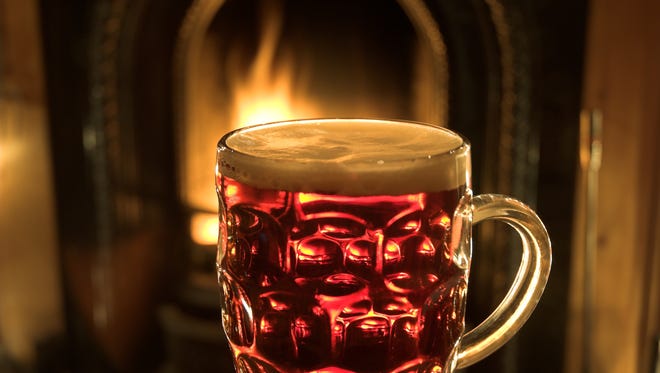Russo: They're called winter warmers for a reason

Traditionally, winter ale season begins just a little bit before Christmas, when the last of the pumpkin ales are making space on the shelves.
But winter beers aren’t specifically for Christmas. When you’re looking a long, cold February in the face, it is nice to know that there still are winter warmers out there.
“Winter warmers” are more a beer attitude than a beer style. Broadly speaking, they are stouts or ambers, running the color gamut from red through to black. At Christmas time, they’re marketed as spicy winter ales, but now that winter has set in for real, if you haven’t tried one of these beers, now is the time.
Historically, winter ales might have developed because of the lack of availability of fresh hops or might even be older than them. Before hops were a beer staple, various spices were used to reduce a beer’s sweetness.
Beer is brewed by boiling the sugars out of barley and adding yeast. The yeast turns as much of the sugar as it can to alcohol before it dies or goes dormant. Without hops or other spices, beer is really a pretty sweet tasting drink.
In the case of the beers that became winter warmers, using lots of barley produced a lot of sugar. The yeast could turn a lot of it into alcohol, winter warmers often were 8 percent alcohol by volume or higher, but there still were a lot of sugars left. Spices, roasted malts and additives like coffee or chicory helped reduce the sweetness and provided a distinct flavor.
Winter ales probably also were influenced by wassail, spiced mead or cider served warm as fortification against a cold evening.
MORE: Cloudy with a chance of beer
MORE: Beer trends on the rise and fall in 2018
Today, winter warmers are kind of the comfort food of beers. They can be filling and still sometimes a little sweet. Because they’re produced on a larger scale, the alcohol content has dipped, with many winter warmers coming in at something closer to 7 percent alcohol or even a little lower. Although, if you’re looking for a bigger winter warmer they’re still pretty easy to find. There are a lot of barrel-aged stouts on the shelves of local breweries and liquor stores that will keep you nice and comfy in your home on a bleak winter evening.
The different flavors and the alcohol content aren’t even the best reasons to try a winter warmer though. The best reason is that they have so much to teach us about temperature and flavor.

Did you know that the smell of cold air really is the absence of any aroma? The aroma molecules of the world around us need higher temperatures to come into full bloom. In the cold, they don’t have as much range and reach our noses with difficulty, if at all. It’s the same with taste.
The fact that extreme cold suppresses both aroma and taste has been something many beer drinkers have misunderstood for a long time, associating ice cold with the taste of beer. Actually, the idea behind ice cold beer is that you can’t taste how bad it tastes. That’s why lots of macro beers taste nasty at any temperature above 40 degrees.
But this phenomenon is easier to experience when a beer has a lot of flavor. Winter warmers provide a perfect experiment opportunity if you’re game.
Pick out any big winter ale, stout or an amber made by an independent craft brewery — it's still pretty easy to find this time of year (every brewery on the peninsula has one on tap right now for sure). Taste it fresh from the tap or fridge, then let it sit. Have a taste every five minutes or so, it may be hard to resist finishing it right away, but remember, you’re doing science.
The longer it sits, the more flavor you’re going to get out of it. You’ll really taste the malts whether they’re chocolate, coffee, caramel, fruit or some combination of the above.
There’s no need to be precious about it, but it might be worth taking 15 extra minutes to finish a beer to get a sense of whether the wait was worth it. If you find out it was, it will open up a whole new sense of what beers can be and how non-ice cold beer still can be quite tasty.
Even if you decide it wasn’t worth the effort, the worst-case scenario is you savored a beer, and that is a pretty good worst case.